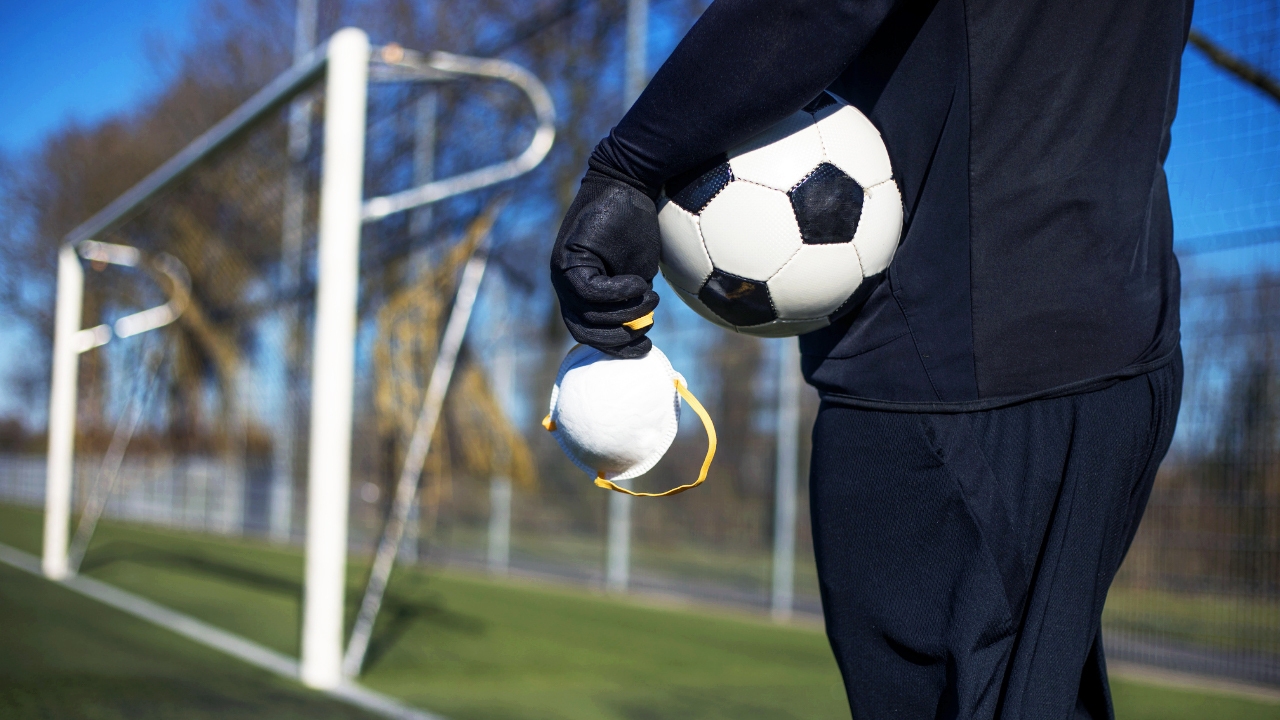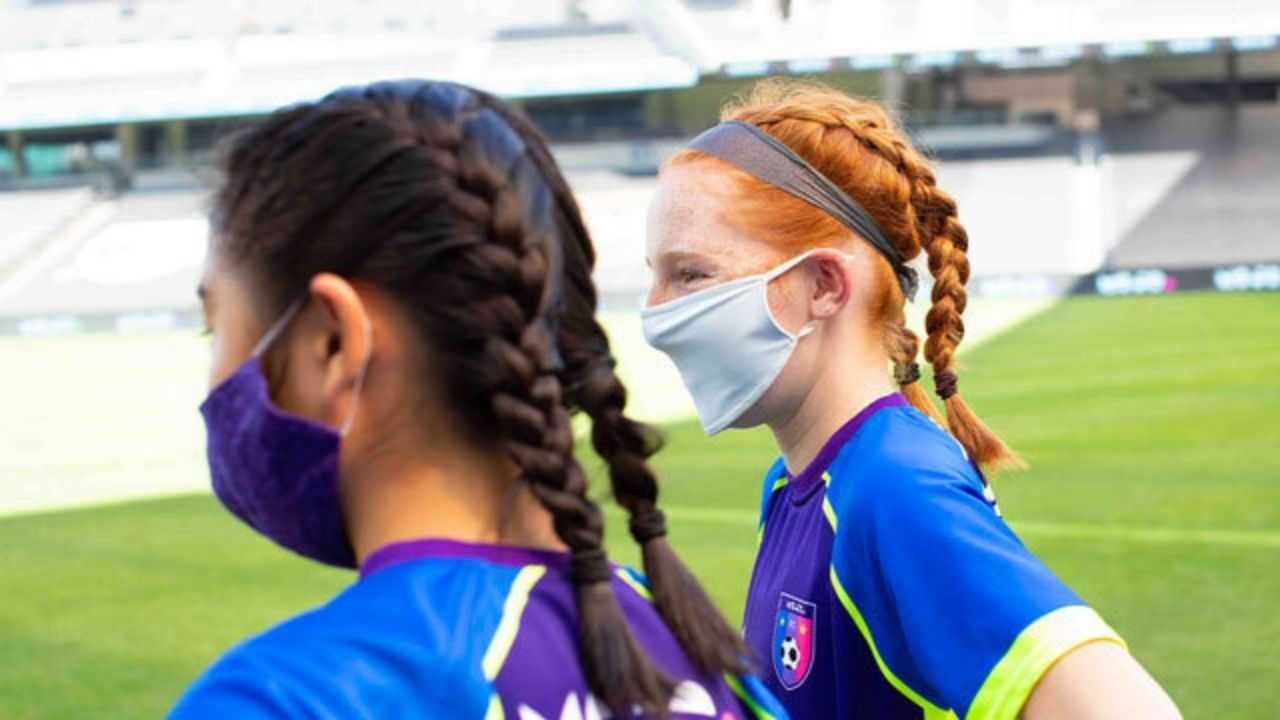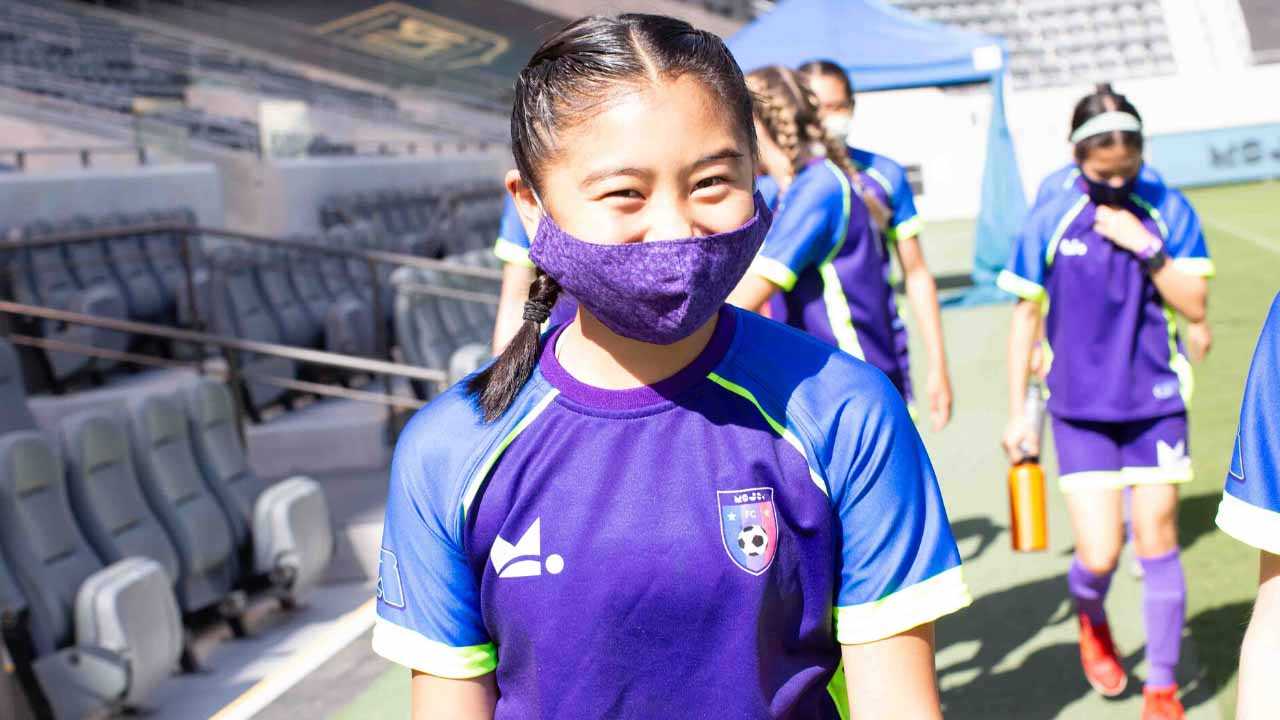Coaching in the Time of COVID
There’s nothing normal for players or their coaches during these unsettling times. Here’s how to keep the ball rolling until things get back on course.
Julia Savacool
| 8 min read

Unsplash
If you have a kid who plays soccer, the calendar on your fridge for the last 10+ months has probably looked something like this: Cancelled, postponed, delayed, TBD. Playing a team sport during a time when physical contact is banned, face coverings are mandatory and worries about viral particles are at freak-out levels is hard. Really hard. And as tough as it is on the players, it’s equally challenging for parents who want their child to experience the joys of soccer — while keeping them safe at the same time.
There’s also the not-so-small issue of motivation. How do you keep kids engaged in team sports when games are cancelled and tournaments postponed? How do you hold their attention and convince them to practice in a world gone virtual? During a time when even the most basic building block in a child’s life — a.k.a. school — is heavily disrupted, what is the purpose of an extracurricular like soccer, anyway?
As many kids who play the game will tell you, soccer is not just a sport. It’s an outlet, a community and a passion. Soccer provides structure and stability for kids when nothing else is going according to plan. So when soccer gets disrupted — well, so does everything else in a child’s life. We asked the beloved coaches of East Coast and West Coast youth soccer teams how they are helping kids handle these exceptional times. These are the five lessons they’ve learned about coaching during the global pandemic.
Say goodbye to the High Five — for now.
To create an environment where kids are comfortable and parents don’t worry, coaches are making safety their main focus. “We have to follow the governor’s orders, which have greatly impacted what we can do in practice,” says James Charette, a coach of 13-year-old girls and 14-year-old boys in Olympia, Wash. In Washington State, that means wearing masks, using hand sanitizer, and following social distancing guidelines. “A few families aren’t supportive of the face coverings and have pulled their child from playing because they don’t want them in a mask,” says Charette.
Additional precautions have been put in place to limit contact between players. For one, no sharing pinnies or water bottles, says Charette. Another biggie: Keeping kids’ bags at least six feet apart on the sidelines, so when they get off the field, everyone is spread out. “Social distancing is the hard part,” admits Charette. “These kids are all doing school online right now, so soccer is one of the few times they see friends. I say about 10 times every practice, no high fives or hugs, no handshakes or fist bumps right now.”
So far, efforts to play safe are paying off: There have been no COVID outbreaks on the team, and the happiness of seeing each other has far outweighed the grumbles about protocol. “We’re proud of our kids for doing the best they can to follow rules, and proud of parents for supporting us in our efforts,” he adds.
Team-building never takes a time out.
True, the reason kids get together is to play the game. But in the spring, when everything went into full shutdown mode, Charette and his fellow coaches acted fast to find ways to keep the team together virtually. The main goal: Making kids feel like the connection to their coaches and each other was still there. “Over Zoom, we held Name That Tune contests, played Jeopardy, had a singing competition and musical instrument contest — whatever we could think of to strengthen our bond as a team,” he says. There were bumps along the way: Spotty web access for some and a lag in internet connection made certain games impossible. But the coaches kept experimenting, and slowly it became clear it wasn’t so much what game they played, it was simply playing it that kept the kids coming back for more.
Across the country in Westchester, NY, youth coach James Torres was realizing the same thing. Where in previous seasons, practice on the field had left little time for players and coaches to engage in personal chatter, suddenly the (virtual) personal connection was all they had. “We did webinars about nutrition with our players, and held ‘Getting to Know your Coaches’ sessions,” says Torres, who coaches boys and girls as young as 9 and as old as 13. The kids adapted quickly to team activities via the internet, and by June, they were able to practice in small groups again.
A virtual session isn’t perfect, but it’s something.
Had the pandemic happened 20 years ago, soccer practice would have looked a whole lot different, with kids and parents being handed a sheet with handwritten drills for players to do on their own. But in 2020, backyard or living room workouts are rarely done in isolation.
Coaching via Zoom has been a learning curve for everyone, but one both kids and grownups agree is better than nothing. During the spring lockdown, virtual workouts for Torres’ team went something like this: The coach headed outside his house, put his computer on a stand and used whatever items were at his disposal to execute training activities and skills like dribbling. “I created different moves for the kids to do, then I’d have the kids set up their phones or computers and I’d go through screens to be sure I could see everyone,” he says. “Once we were all connected, I’d demonstrate each skill, then kids would have an opportunity to do it and I’d ask them to put volume up on their device so they could hear my voice as I gave each player personal feedback.”
Virtual coaching isn’t easy, but Torres says it was a useful exercise in instructing kids verbally on how to make corrections, rather than physically showing them. He also employed Zoom to screen share videos of previous games. “We were able to watch them as a team to review certain situations and decide how players could do certain things in the future — different passing patterns and other tactical stuff,” he says.
Routine still rules the day.
They might tell you that they don’t, and they might balk when you try to impose rules. But underneath it all, kids find routines reassuring, and the daily disruptions caused by COVID have impacted the confidence of even the free spirits in the gang.
Where possible, coaches are stepping in to offer a sense of normalcy. “Some of these kids haven’t been in school since last March,” says Charette, noting that classes from home can quickly devolve into video gaming and internet surfing. Now more than ever, soccer practice is where kids are getting the structure, discipline, gentle corrections, and encouragement they used to find elsewhere.
One thing that’s likely missing, no matter where you are in the country: Competition. The chance to play other teams or have tournaments varies — many clubs are limited to intra-squad games or “Olympic-style” contests with local clubs. In some cases, games have been cancelled entirely for the fall season. “The boy’s team has not played a game since March — they really miss it,” says Charette. “It’s a long time to just be training, and the longer it goes on, the harder it is to stay connected as a group.”
To keep to spark alive, Charette makes sure each practice is as structured as possible, and brings discussion points to every session to talk about with the team: What does it mean to be a good teammate? How can you support your fellow players better? By presenting soccer as more than just kicking goals and scoring points, it helps kids find purpose in what they’re doing.
Practice is cheaper than therapy.
A recent study in the medical journal JAMA Pediatrics found roughly one in seven kids struggles with a mental health disorder, ranging from depression to anxiety to ADHD. About half of those children never receive professional help, leaving them to find other methods for dealing with their issues.
Sports have filled that role for kids (and adults) in one way or another. It’s an outlet and an escape, and a place to learn healthy coping skills. During the pandemic, opportunities for kids to find their footing through sports like soccer have been massively disrupted, and if coaches have learned one thing, it’s that keeping soccer alive for kids — in whatever form possible — is more important now than ever before.
“Over the summer, I talked with one player’s parents who were worried about their son,” says Torres. The boy wouldn’t leave his room, he wasn’t eating, and he wasn’t smiling — he was nothing like the practical jokester Torres knew from the team. Shortly after that conversation, the team was allowed to begin practicing together in person again; almost immediately, the smiles and jokes returned. “It just shows that soccer is so much more than kicking a ball,” says Torres. “There is a social aspect and emotional connection that’s essential — and it’s important for kids to have that option, even if the sport looks a little different right now.”




